|
| Author |
Message |
    
richarddurgee
Senior Member
Username: richarddurgee
Post Number: 1140
Registered: 11-2001

| | Posted on Saturday, June 10, 2006 - 11:48 pm: | 




|
J.B.'s Lockwood-Ash Eccentric and core box Photos
1.Core Box 1
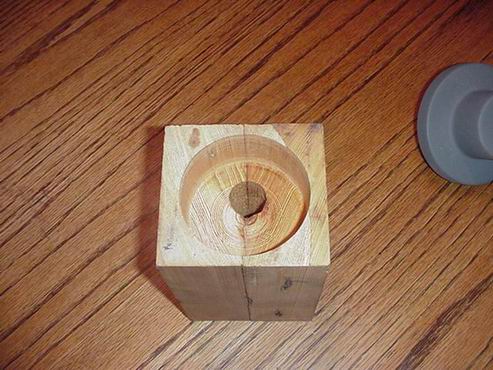
2.Core Box 2
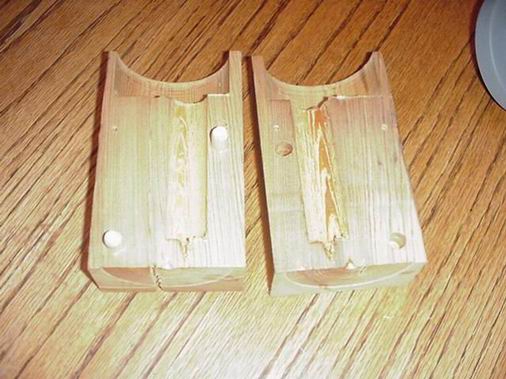
3.Eccentric 1
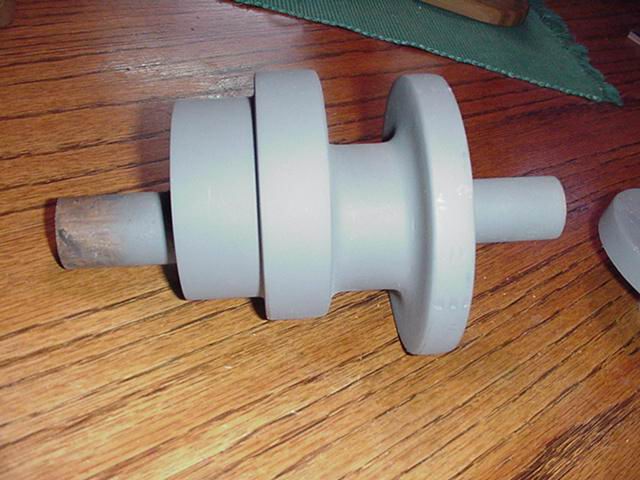
4.Lockwood-Ash Eccentric
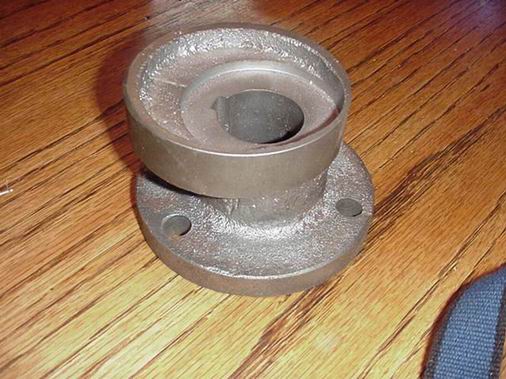
5.Prop Coupling
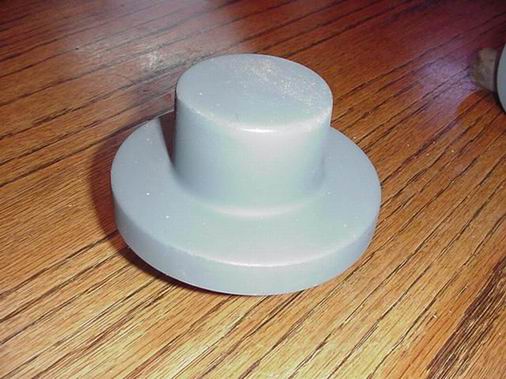 |
    
jb_castagnos
Senior Member
Username: jb_castagnos
Post Number: 136
Registered: 07-2002
| | Posted on Sunday, June 11, 2006 - 06:03 am: | 




|
We've run out of pump eccentrics, so I'm making a pattern to have some cast. I just finnished drilling the core box, it will have to be sanded smooth and painted. The eccentric pattern will have to be sawn in half through the dowel and each half put on a board. These are cast iron, there's still one foundry in the area that pours cast. I'll take the pattern to them to see if they're intrested in pouring it, and see what size board they want it on. I plan to put the eccentric and mating prop coupling flange on the same board, same labor, only a little extra charge for the iron. The flange is tapered so it will draw out of the sand, it will be mounted under the board in one piece and gated so the metal comes in from the top. The unpainted side of the dowel will be cut off after the pattern is split. The dowel is 1.125", turned down to 1.010" for the core print. The core box is drilled 1". When making patterns everything has to be reversed, the dowel makes the hole in the sand so it has to be a little larger in diameter and longer than the core. |
    
thomas
Senior Member
Username: thomas
Post Number: 224
Registered: 07-2002

| | Posted on Wednesday, June 14, 2006 - 07:26 pm: | 




|
Wow, Really a lost art. Antiques Roadshow had a childs cast iron operating bank with fancy cast "lace work". I doubt it could be recreated
today with all our technology but was a common sight 100 years ago. |
    
jb_castagnos
Senior Member
Username: jb_castagnos
Post Number: 141
Registered: 07-2002
| | Posted on Thursday, June 15, 2006 - 12:06 am: | 




|
When I first got started in this hobby, in the early 90's I visited the Nadler Foundry looking for parts and info. Nadler bought out Lockwood Ash inboards and produced them under the Nadler name until the early 50's. They showed me around the pattern room and foundry, explaining how parts were made. Outside the foundry door was a mound of sand. It was obvious that is was a mould for a syrup kettle. These cast iron kettles were used for boiling sugar in the 1800's, every plantaion had it's own sugar mill. They ranged from 4 to 8 feet in diameter, and are now in high demand as yard ornaments, bringing $200 per foot or more. I asked one of the workers if they were reproducing these, he said they were trying but weren't having much luck. This was a modern foundry with electric furnaces and power hoist, the latest formulas for moulding sand, and they couldn't reproduce a kettle made by the thousands in the 1800's. I visited the Pearce Foundry today, they said they would pour the eccentrics for me, very nice of them, the smallest pour I saw there was a pump impeller that weighed 1/2 ton, the largest a 20,000lb pump housing. I'm now putting the parts on a board, will send pictures when done. |
    
rbprice
Senior Member
Username: rbprice
Post Number: 205
Registered: 11-2001

| | Posted on Thursday, June 15, 2006 - 07:52 pm: | 




|
Yo JB - who made the iron castings? I need a flywheel for a 1920's era Hess engine: approx 14 in. OD x 3in. thick: probably about 65 lbs as cast. I can make a pattern if you know someone who could cast it for a reasonable price.
Thanks
Bob |
    
jb_castagnos
Senior Member
Username: jb_castagnos
Post Number: 142
Registered: 07-2002
| | Posted on Thursday, June 15, 2006 - 09:35 pm: | 




|
Rick Rowlands in Ohio is doing some Caille Liberty flywheels for me right now. I filled and smoothed a broken flywheel for a pattern. Price is very resonable and his work is first class. Go to
http://www.todengine.org/engineworks.html
I think he's busy but you could e-mail him and see how long he thinks it wil be. |
|
|
|


|


